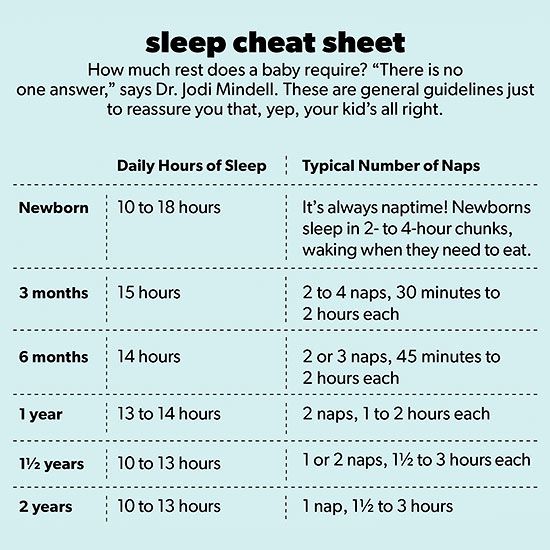Ultimate Guide to Sleep Training Your 5-Month-Old Baby for Blissful Nights
Hey there, Super Moms and Dads! Are you dreaming of the day (or night) when your little one will sleep peacefully through the entirety of the moon’s glow? If you’re reading this, your bundle of joy is around 5 months old, and you’re probably pondering the sleep training universe, wondering if there’s a magical constellation that leads to the land of nod. Well, we’ve sprinkled some dreamy dust and crafted this comprehensive guide that’s sure to twinkle with tips and steps to gently introduce sleep training to your baby!
Understanding Your 5-Month-Old’s Sleep Needs
First things first, every baby is a unique star with their sleep patterns and needs. Typically, at 5 months, babies need about 12-15 hours of sleep over a 24-hour period. This includes both daytime naps and nighttime rest. It’s the perfect time for them to start learning how to fall asleep on their own and make it through the night with fewer awakenings.
Before embarking on this starlit journey, ensure you’ve consulted with your pediatrician to give the go-ahead for sleep training and rule out any medical issues that might be affecting your baby’s sleep.
Setting the Stage: Creating a Sleep-Friendly Environment
Like preparing a cozy den for hibernation, creating the perfect sleep environment is essential. Ensure the room is cool, dark, and quiet. You might want to consider a white noise machine or blackout curtains as your co-pilots in this mission. A nighttime routine is equally vital – bathing, cuddling, and perhaps a story or lullaby can signal to your baby that it’s time for sleep.
Laying Down the Foundation: Establishing a Consistent Sleep Routine
Consistency is key! Babies flourish on routine like bees to flowers. Sticking to a set schedule for naps and bedtime will do wonders. Watch for sleepy cues and use them to your advantage by starting your bedtime routine before your baby is overtired.
The Gentle Approach: Sleep Training Methods That Comfort and Reassure
There’s a galaxy of sleep training methods out there – from the ‘Cry It Out’ method to more gentle approaches. If your heartstrings play a melody of gentle rhythms, you may prefer methods like ‘Fading’ or ‘Parental Presence’ which gradually reduce your involvement in your baby’s journey to sleep. These methods can be comforting and reassuring for both you and your baby as they learn to fall asleep on their own.
Decoding Baby Sleep: Understanding Sleep Regressions and Milestones
Just when you think you’ve got it all figured out, along comes a sleep regression or a developmental milestone that shakes up the stardust. At around 4-5 months, many babies experience changes in their sleep patterns. Awareness and understanding of these changes can prepare you to navigate them with grace and patience.
Your starry-eyed little sleeper will soon be embracing the land of dreams more fully, and you’ll be there to support each flutter of their eyelids. This guide will continue to mirror your journey through the night sky, illustrating step-by-step methods and offering a constellation of tips to ensure that sleep training is as restful as a lullaby.

Ultimate Guide to Sleep Training Your 5-Month-Old Baby for Blissful Nights
5 Essential Sleep Training Prep Steps for Parents
Before you sprinkle the magical sleep dust, let’s ensure you’re well prepared for this loving voyage into nighttime tranquility. Here are five things you should absolutely know:
- Babies’ Sleep Patterns Differ: At around 5 months, babies typically snooze for 12-15 hours a day. But remember, just like fingerprints, each baby’s sleep pattern is wonderfully unique!
- Safety Comes First: Always place your baby on their back to sleep and ensure the crib is clear of any soft bedding or toys. A safe baby is a sleeper who can dream sweetly and securely.
- Consistency is Your Trusty Sidekick: Your little star will benefit from a bedtime routine that’s as reliable as the North Star. Bath, book, bed—that’s the golden ticket!
- Patience is a Virtue: Rome wasn’t built in a night, and your baby’s sleep habits won’t change in one either. Be patient and persistent; it’ll pay off like twinkling stardust on a clear night.
- Support Networks Sparkle: You’re the captain of this dream ship, but don’t sail alone! Connect with other parents, join forums, or talk to pediatric sleep consultants to navigate this expedition together.
Preparation complete? Fabulous! Now, let’s rocket into the restful realms of sleep training!
Crafting a Dreamy Crib: 5 Tips for a Sleep-Inducing Nursery
Transform your baby’s nursery into a slumber sanctuary with these sleep-inducing setups:
- Keep it Cool: A cool room (between 68-72°F or 20-22°C) encourages the best sleep. Think of it as setting the perfect stage for dreamland’s performance.
- Embrace the Dark Side: Blackout curtains can be a new parent’s BFF, creating a cave-like darkness that whispers ‘it’s sleepy-time.’
- Soothe With Sound: A white noise machine can mask household or street noises, lulling your munchkin into a serene snooze.
- Comfort Is Key: A firm mattress, snugly fitted sheets, and cozy sleepwear set the scene for a contented, comfy rest.
- Routine is Your Rhythm: Wind down with a calming routine. Bathe, snuggle, and soothe with a song or story – let these activities be the prelude to dreamland’s symphony.
With these sleep-conducive elements harmonizing together, your baby’s nursery becomes a lullaby land!
Nudging Towards Dreamland: Incremental Steps for Sleep Success
Linus from Peanuts had his beloved blanket, and your baby has you to help them find comfort as they drift off. Practicing soothing techniques that gradually reduce your involvement might just be the ticket to a peaceful night.
Try ‘Gradual Retreat’ – sit a little further away each night after putting your baby down. Maybe introduce a lovey (as long as it’s safe), which can be a soft signal for sleep.
Balancing your presence with your baby’s growing independence creates a harmonious sleep routine. Imagine a conductor gently guiding their orchestra – that’s you, cultivating a nocturnal cadence of tranquility.
Embracing the Bumpy Night: Handling Sleep Setbacks
Let’s face it, sleep training is more of a dance than a linear path. Teething, growth spurts, and the infamous 4-month sleep regression are the cha-cha steps in your waltz through the nighttime.
Stand your ground during these twisty times, keep hugging that routine tightly, and show your baby that despite the sleep shuffle, the comforting boogie of your family’s sleep rhythm remains unshaken.
Regressions and milestones may temporarily disturb the restful waters, but with each rocking wave, you’re teaching your little sailor to find their sea legs in the ocean of sleep.
Getting into the Groove: Finding Your Family’s Sleep Beat
Every family has their own sleep beat, and finding yours is like creating your very own lullaby. Experiment with what works for you and your baby, cherish the quiet moments of the bedtime story, the gentle kiss goodnight, and the whispered ‘I love you’s’ that meander in the soft night’s breeze.
Your unique rhythm will emerge, and before you know it, sleep training won’t just be a process, but a harmonious part of your family’s nightly symphony.
See more great Things to Do with Kids in New Zealand here. For more information see here
Disclaimer
The articles available via our website provide general information only and we strongly urge readers to exercise caution and conduct their own thorough research and fact-checking. The information presented should not be taken as absolute truth, and, to the maximum extent permitted by law, we will not be held liable for any inaccuracies or errors in the content. It is essential for individuals to independently verify and validate the information before making any decisions or taking any actions based on the articles.




